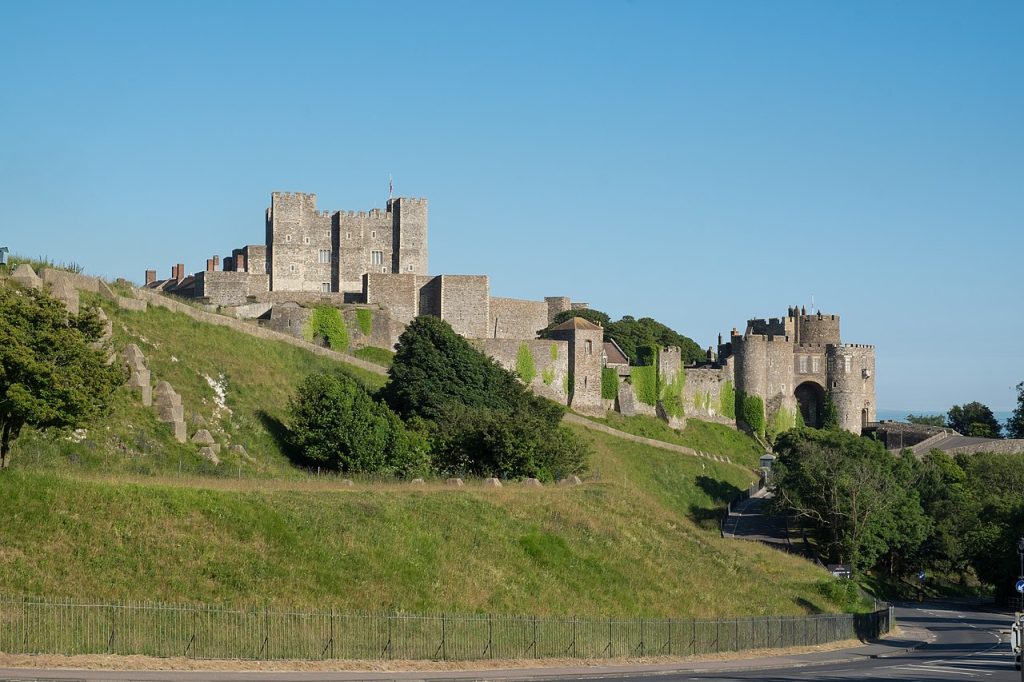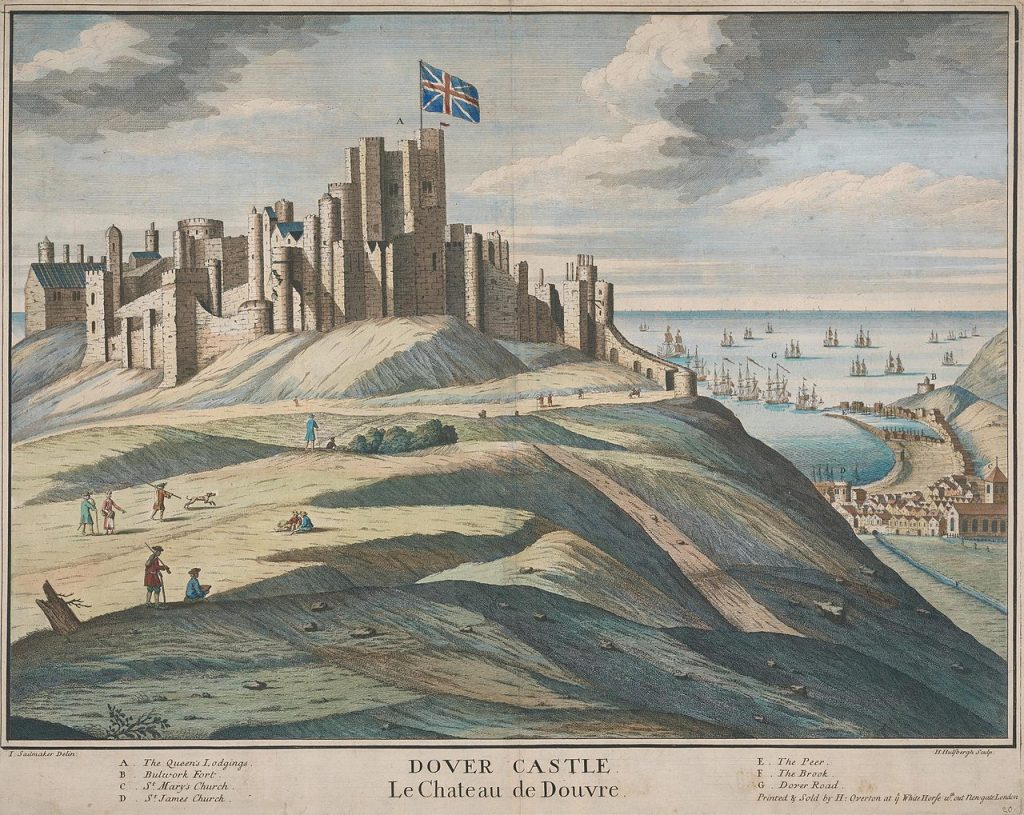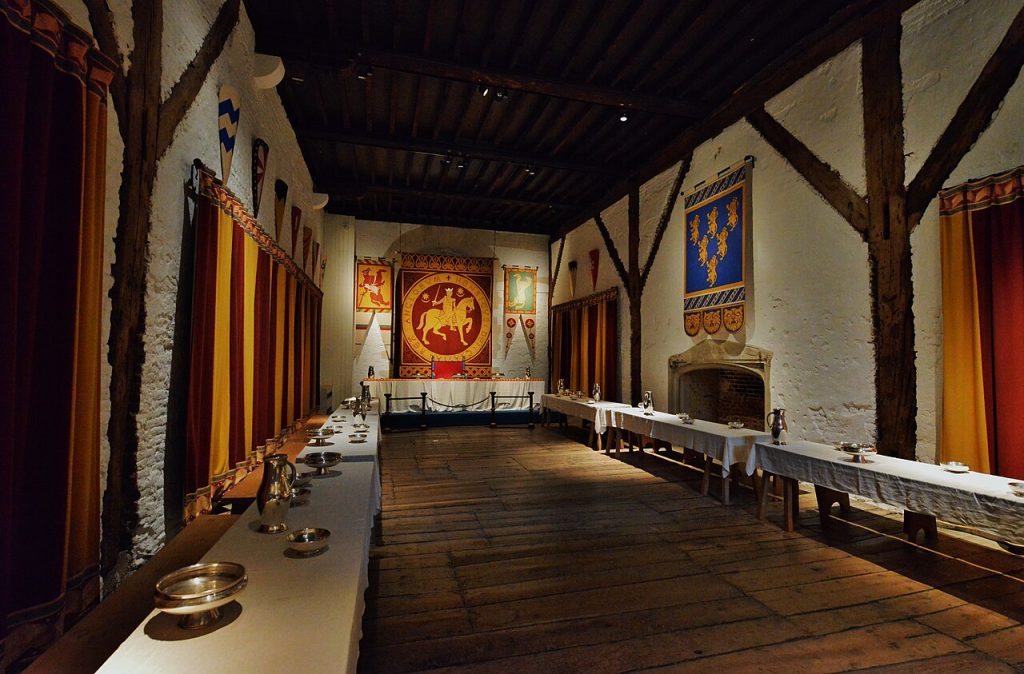Dover Castle, located on the southeastern coast of England, has a rich history dating back over 2,000 years.

The Romans
Its strategic location, overlooking the English Channel, has made it a vital defensive site throughout British history.
The castle site was originally used by the Romans in the 2nd century AD as a fort to defend against invaders crossing the channel. The Roman lighthouse, or Pharos, still stands today!
The Normans
In the 11th century, William the Conqueror strengthened the site by building a motte-and-bailey castle on the same location, laying the foundation for the fortress we see today.

Over the centuries, Dover Castle was expanded and modified, particularly during the medieval period, with the addition of a large keep, gates, and walls.
Dover’s wall’s fall
The Siege of Dover took place in 1265 during the Second Barons’ War between King Henry III and rebellious barons led by Simon de Montfort.
The barons besieged Dover Castle, a key royal stronghold controlling access to the English Channel, in an attempt to weaken the monarchy.

The castle was defended by Sir Henry de Montfort, Simon’s son.
Despite the barons’ efforts, the siege was unsuccessful, largely due to the arrival of royal reinforcements.
The failure to capture the castle was a setback for the barons, though the war continued until 1267, when the monarchy regained control after Simon de Montfort’s death at the Battle of Evesham.
Again, after this Dover Castle didn’t rest!
It became one of the most important military strongholds in England, guarding the coastline against potential invasions, especially during the Napoleonic Wars and both World Wars.
WW2
During World War II, the castle played a crucial role in the defence of Britain. Its extensive underground tunnels were used as a military headquarters, and it was a key site during the Dunkirk evacuation in 1940.

Today, Dover Castle is a major historical site and tourist attraction, showcasing its military history, medieval architecture, and important role in British defence through the ages.






